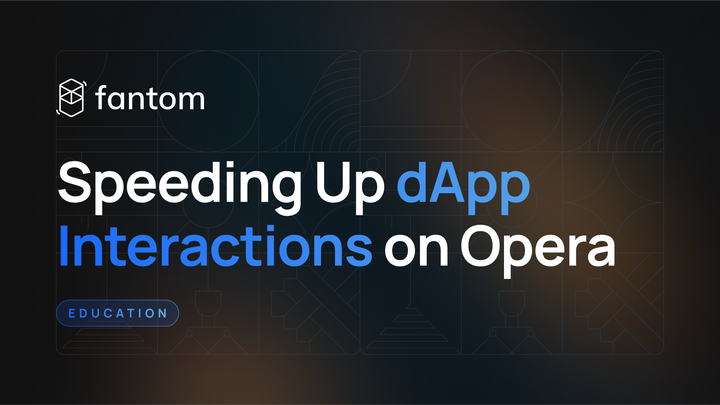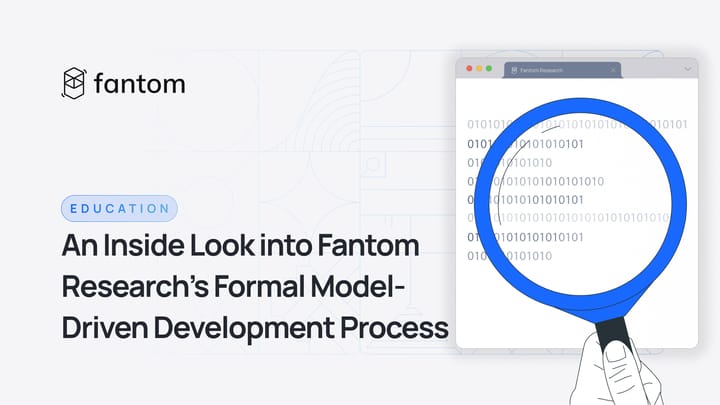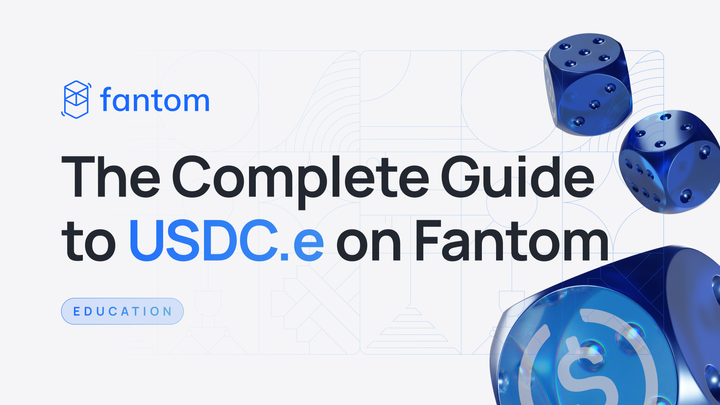Fantom and the Web3 paradigm

Like Metaverse, which we addressed in a previous article, Web3 has recently become a mainstream crypto-buzzword. When expressions like these become popular, it signals growing interest, and, in this case, increasing awareness of the potential impact Web3 will have. But what does Web3 mean, and how will Fantom help build it?
Web3 broadly refers to the next iteration of the internet that uses blockchain technology to change how we exchange and control information online. Think of Web3 as the infrastructure that underpins a truly decentralized metaverse, which is just one application among many others that can be built on top of it. Think of the metaverse as an experiential window into the many possibilities that Web3 introduces.
The fundamental idea behind Web3 is that the internet can be reformed into a peer-to-peer model through decentralization. This broad vision is tied to a number of complex underlying technologies that Fantom is building in its mission to grow a high-performance, public, and decentralized user network.
In this article, we offer an overview of some of the goals of Web3 builders. As we do so, we look at some of the projects building in the space, and we underscore how the Fantom Layer-1 will meet Web3 needs now and far into the future.
A Decentralized Internet
Exploring the primary driver for the push to decentralize the internet ‒ democratization ‒ foregrounds the many reasons why the Fantom network is particularly suited to the Web3 world.
In the current dominant Web 2.0 paradigm, corporations or other centralized organizations control the platforms used to post content to the web. These controlling interests own content submitted by users: they decide what is publishable and profit off of user data and user submissions.
Crypto builders often suggest that whereas Web 2.0 is “read/write,” Web3 is “read/write/own.” These expressions capture in shorthand the transformation that the decentralization of the internet would have. Supported by blockchain, commonly used services and even content can be tokenized, enabling users to own internet services.
In the context of DAOs, users could engage in platform governance, determine how to reward contributors, share profits, and so forth. Decentralization would remove controlling interests and corporations from the equation.
A decentralized public network relies on speed, security, and reliability. Fantom offers subsecond transaction finality and inexpensive transaction costs, with a host of upgrades in progress that will further increase throughput and scalability.
In terms of security, the proof-of-stake network can withstand ⅓ of nodes acting maliciously or going down. But perhaps most crucially, Fantom has never experienced an interruption in service or double-spend error. The system is as reliable as it is fast.
Fantom’s DeFi protocols exemplify the benefits of decentralization. DeFi replaces the banking system with dApps that are token-holder governed, permissionless (anyone can use them), and transparently run via on-chain smart contracts. The result is a network of dApps that gives users a voice in platform development and opens access to financial tools formerly exclusive to bankers like lending and liquidity provisioning.
Truth not trust in ownership
The disintermediation of third-party service providers ‒ the middlemen ‒ empowers users to assume ownership not only of the platforms they use but also fundamentally of digital assets, the content they produce, and their personal data.
In the Web2 world, users benefit from managing personal financial assets electronically and buying and selling commodities online. But in most cases, those assets are managed through a trusted third party. Take, for example, banks, investment firms, or the newer platforms that permit the public to invest fractionally in real estate or fine art.
In all of these examples, the record of ownership is managed by an independent entity trusted by virtue of some combination of legal frameworks, attestation, or certification. If that third party were to fail, there is no guarantee that consumers would fully recover their assets. Put simply, we trust that service providers will protect our interests and our assets.
The Web3 paradigm replaces trust with truth; tokenization enables you to store your tokens on a wallet where you control the private keys. Tokenized assets travel with you and, by definition, are sellable on secondary markets.
If you’ve ever purchased or sold an NFT on a Fantom marketplaces like PaintSwap, transferred a skin from another platform into 8Bit Metaverse, or tried to display a GIF NFT in Slothtopia, you understand that tokenization grants you complete control over your assets. What’s more, you also know why it’s essential that transactions remain inexpensive.
The benefits of ownership amount to very little if hefty transaction fees are levied on every buy and sell: if a user buys an NFT for, say, the equivalent of $50, they certainly don’t want to have to pay $5 or 10% of face value to complete the transaction. Following recent upgrades to the protocol, Fantom transactions are cheaper than ever and generally cost under a cent to just a few cents.
The momentum for ownership via tokenization has been accelerating. Even legacy enterprises have begun to explore the benefits of tokenization. Mt. Pelerin, which has integrated Fantom, is meeting needs in this space with extensive services to enterprises seeking to tokenize shares and offer traditional shareholder benefits to token holders.
Your creativity, your content
On Web3, users own platforms, personal data, and content.
Granted, we are early in terms of having the dApps that support NFT “Soulbound tokens” that provide frameworks for personal data management. But the need is clear, and progress continues.
In terms of content ownership, however, Web3 dApps have long been a driving force in sustaining the creator economy.
We see this already in the NFT markets that enable creators to directly access communities where they can advertise and sell their work. Consider the artist Uman, who began working on Tezos and Ethereum but eventually moved to Fantom to take advantage of the network's low costs, speed, and quickly growing user base. Through her NFT art, Uman has earned widespread acclaim across the crypto industry.
Like the art world, social media is ripe for disruption that would reward content creators. In the current system, users essentially exchange their data for the privilege of posting tweets or blogs on social media platforms. But once posted, those submissions are fixed: moving content from one platform to another is cumbersome if not impossible, and only the most elite influencers receive compensation for their work.
Web3 changes the paradigm by enabling content to be tokenized. Capitalizing on Fantom’s low transaction fees, Punchword is working rapidly to offer a solution with an alternative platform where creators can combine text, image, and video into NFTs that can then be distributed for profit.
Conclusion: Paradigm shifts
We should remember that Web3 represents a concept in evolution and that it hasn’t yet realized all that it promises. It exists now, but most analysts agree that a decentralized internet's true benefits and applications have yet to come.
Drawing loosely from the critical lessons that the history of science gives us, one might say that we are in the middle of a paradigm shift in which the culture and technologies that sustain the internet are in rapid transition.
The platforms that will ultimately power the internet of the future are those with the agility to adapt to the needs of Web3. The Fantom presentation at Consensus 2022 showed how Fantom, through incremental upgrades and protocol development, will evolve in sync with the scalability, decentralization, and throughput needs of dApps of the future.
If, as the philosopher Thomas Kuhn suggested, paradigm shifts culminate in revolution, we can expect big, positive changes ahead in which Fantom will play a significant role. Come and build Web3 with us.



